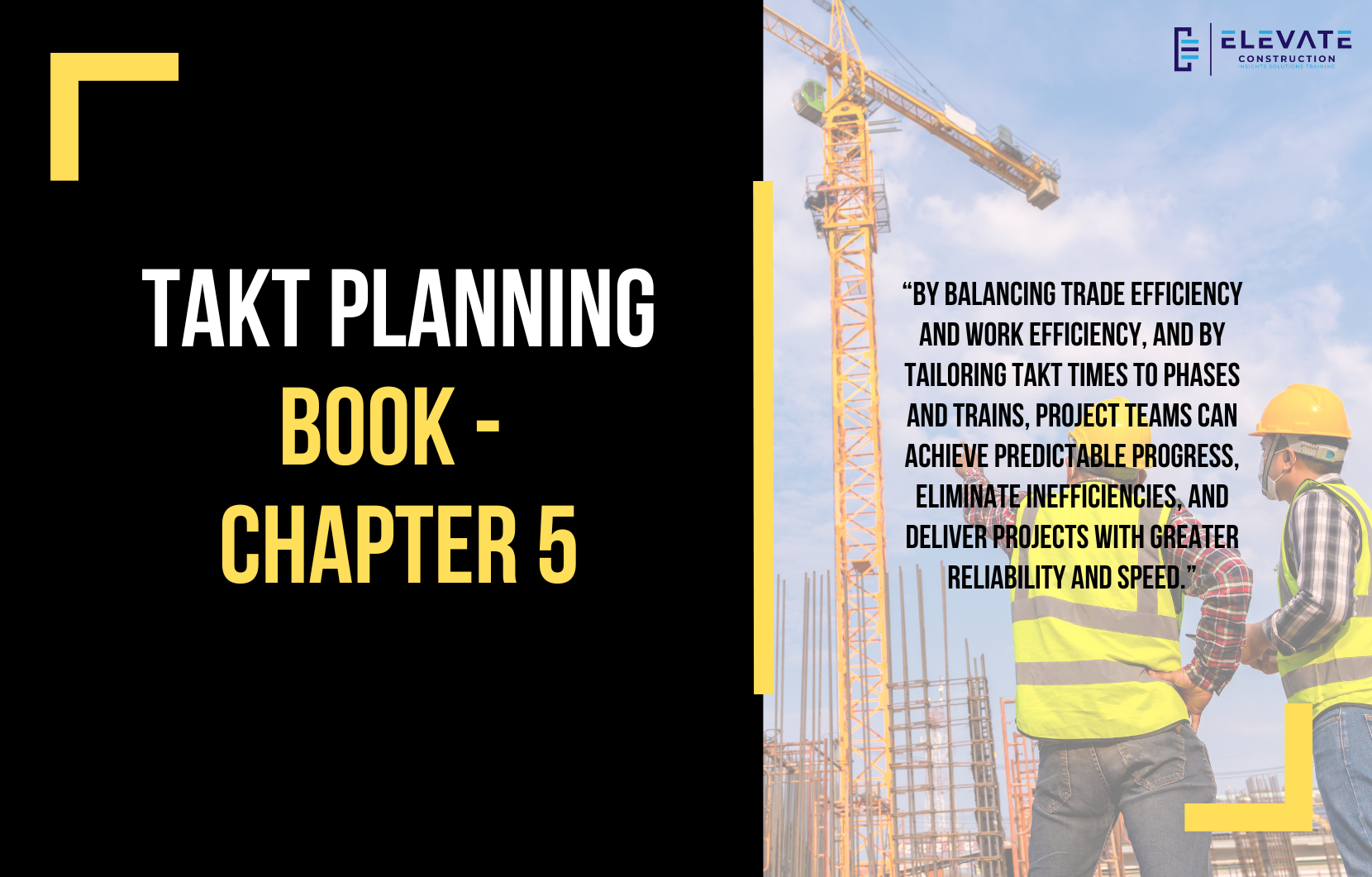Understanding Takt Time in Construction
In this blog, we’re diving into Takt Time as explained in Chapter 5 of the book on Takt production systems. Takt Time is one of the most powerful tools we have for bringing flow, predictability, and balance to construction projects.
Key Definitions
Before we get into the details of Takt Time, let’s define some important terms:
- Takt Plan: A construction plan in a time by location format showing the flow of trades across the project.
- Takt Planning: The process of creating that plan at the macro (big picture) or norm (detailed) level.
- Takt Steering: Controlling the train of trades by steering around project constraints.
- Takt Control: Clearing the path for trades and ensuring performance is governed properly.
- Work Packages & Wagons: Scopes of work bundled into Takt wagons, which move through zones as part of the trade flow.
- Constraints & Roadblocks: Conditions or obstacles that restrict trade performance.
- Buffers: Built-in time to absorb delays and maintain flow.
These concepts along with others like flow units, bottlenecks, line of balance, and last planner provide the foundation for understanding how Takt Time functions in construction.
What is Takt Time?
In lean manufacturing, Takt Time is the pace at which products or services must be completed to meet customer demand while balancing workflow.
In construction, it’s the pace at which trades move through zones to achieve the project’s end date. It also represents the rhythm of finishing spaces for turnover to the owner.
You can have multiple Takt Times in a project:
- Interiors may run on a three day Takt Time.
- Exteriors might run on a five day Takt Time.
- Phases can have multiple trains of trades moving at different speeds.
The key is that zone boundaries and Takt Time together define the process and this is what gives us visibility into trade flow and workflow.
Why Takt Time Matters
Takt Time enables teams to:
- Establish intermediate deadlines by zone.
- Balance trade efficiency (supply of installed work) with work efficiency (market demand).
- Avoid inefficiencies like stacking trades, variation in pace, or downward productivity spirals.
- Optimize zones using the formula:
Takt Wagons + Zones – 1 × Takt Time = Duration.
A strong analogy here is the airline business. Both planes and passengers are important but passengers aren’t going anywhere if the plane isn’t moving. In construction, trade flow (the plane) must be steady for the work (the passengers) to move smoothly.
Macro vs. Norm Level Takt Plans
- Macro-Level Plans: Usually start with a five day Takt Time. These are quick, visual, and allow teams to align around a strategy.
- Norm-Level Plans: Rarely stick with a five day Takt Time. Instead, trades adjust zone sizes and Takt Times for more precise flow.
Important rules to follow:
- Never lock Takt Time to weekends. Delays should be absorbed by adjusting days, not pushing work into weekends.
- Never assume one for one trade to wagon alignment. Work packages can be split or combined to achieve flow.
Multi-Train Takt Plans
Contrary to a common misconception, you don’t have to force all trades into the same Takt Time. Multi-train Takt plans allow trades to move at different speeds, as long as the overall plan avoids inefficiency gaps.
When creating these plans:
- Start with the fewest number of trains possible.
- Magnetize adjacent activities to those trains.
- Optimize the largest train first.
- Keep trains close and resolve intersections proactively.
Final Thoughts
Takt Time is not just about rhythm it’s about trade flow, balance, and optimization. Start simple with macro level planning, then refine at the norm level by adjusting zone sizes and Takt Times.
As our industry advances, we’ll continue pushing toward one day or even hourly Takt Times, but the fundamentals remain the same:
- Pick your speed.
- Stagger starts and finishes correctly.
- Use Takt Time to guide trade flow and zone completion.
Key Takeaway
Takt Time is the heartbeat of construction flow. By balancing trade efficiency and work efficiency, and by tailoring Takt Times to phases and trains, project teams can achieve predictable progress, eliminate inefficiencies, and deliver projects with greater reliability and speed.
If you want to learn more we have:
-Takt Virtual Training: (Click here)
-Check out our Youtube channel for more info: (Click here)
-Listen to the Elevate Construction podcast: (Click here)
-Check out our training programs and certifications: (Click here)
-The Takt Book: (Click here)
Discover Jason’s Expertise:
Meet Jason Schroeder, the driving force behind Elevate Construction IST. As the company’s owner and principal consultant, he’s dedicated to taking construction to new heights. With a wealth of industry experience, he’s crafted the Field Engineer Boot Camp and Superintendent Boot Camp – intensive training programs engineered to cultivate top-tier leaders capable of steering their teams towards success. Jason’s vision? To expand his training initiatives across the nation, empowering construction firms to soar to unprecedented levels of excellence.
On we go

